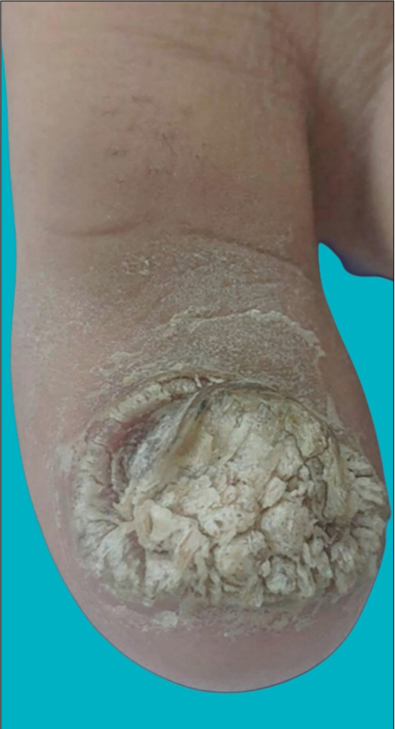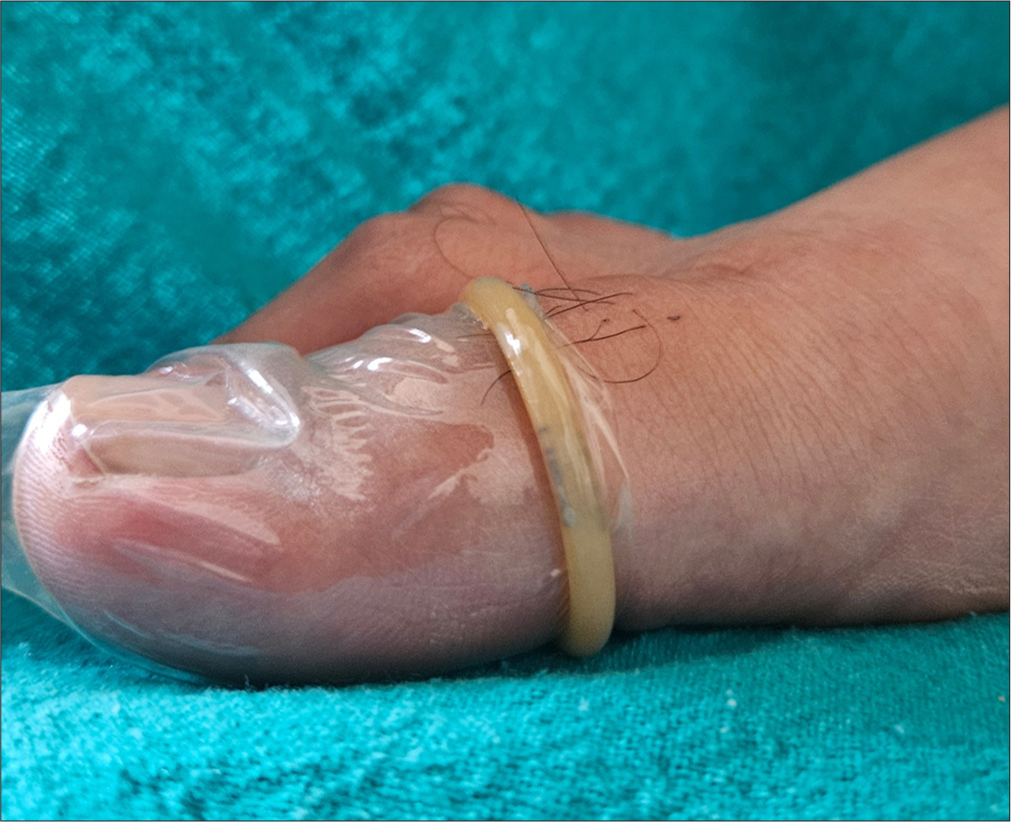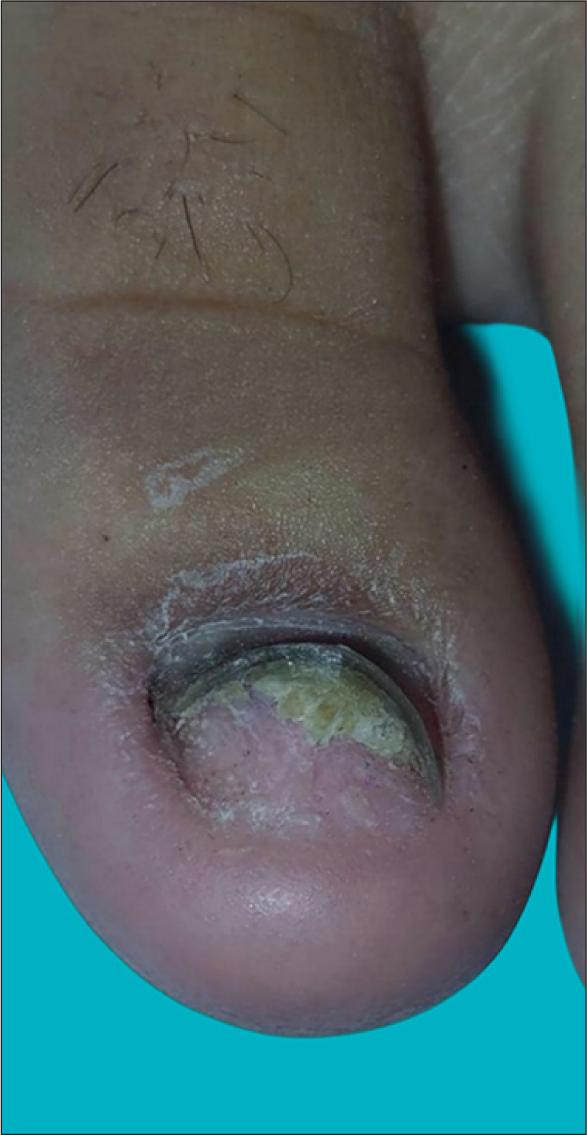Translate this page into:
Seal and heal: A novel deal for periungual wart
*Corresponding author: Sanjeev Gupta, Professor and Head, Department of Dermatology, Venerology and Leprosy, Maharishi Markandeshwar Institute of Medical Science and Research, Mullana, Haryana, India. sanjeevguptadr@gmail.com
-
Received: ,
Accepted: ,
How to cite this article: Gupta S, Jangra RS, Dabhra A, Gupta N. Seal and heal: A novel deal for periungual wart. J Cutan Aesthet Surg. doi: 10.25259/JCAS_105_2024
Abstract
Periungual warts are a common yet challenging dermatological condition, often resistant to conventional treatments due to various factors that make these warts notoriously resistant to conventional treatment. We propose an innovative solution to this problem.
Keywords
Wart
Periungual
Innovation
Occlusion
Topical therapy
PROBLEM STATEMENT
Periungual warts are a common dermatological condition often encountered in outpatient settings [Figure 1]. These are caused by Human papillomavirus-1, 2, and 4.1 Due to their proximity to the nails, periungual warts can be particularly troublesome, leading to nail deformities, discomfort, and secondary infections if left untreated. Cryotherapy, electrocautery, intralesional para-phenylenediamine (PPD), intralesional candida antigen, topical salicylic acid, imiquimod, and laser are examples of conventional procedures that can be done for periungual warts.2 These warts are notoriously resistant to above said conventional treatments, largely due to factors such as poor patient compliance, limited penetration of topical medications due to a thick keratin layer, and frequent rubbing off of topical treatment due to trauma or repeated contact. Due to these challenges, many patients experience suboptimal outcomes in the treatment of periungual warts. Patients often become discouraged when treatments do not produce an immediate or complete resolution, resulting in discontinuation or inconsistent use of therapies, leading to frustration for both patients and healthcare providers.

- Verrucous lesion on the big toe.
RECOMMENDED SOLUTION
To solve this problem, we propose to use a condom/finger cot as an occlusive covering to enhance penetration and increase efficacy in such cases. For this, the patient is first asked to soak the affected area in lukewarm water to hydrate and soften the keratin, and the lesion is gently scrubbed and dried. Wart paint (a combination of salicylic acid and lactic acid) is then applied. Following this, a finger cot or condom, depending on the girth of the digit involved, is placed over the treated digit for 30 min [Figure 2]. The occlusive nature of the finger cot/condom increases moisture retention and creates a sealed environment, which facilitates better drug absorption through the thick keratin layer. This method was very effective for periungual warts as the finger cot/condom could be comfortably worn over the affected area without causing discomfort. We applied this methodology to multiple cases of periungual warts and found it to be both useful and beneficial in promoting the resolution of warts [Figure 3]. This simple, easily available, and cost-effective technique may be a milestone in the treatment of periungual warts. The said case [Figures 1-3] was treated in 6 weeks of topical application under occlusion with a condom.

- Condom worn over the big toe.

- Complete clearance of lesion after topical application of wart paint and occlusion with Condom.
Authors’ contributions
All authors have made equal and significant contributions to the diagnosis, case workup, literature review, writing, and editing of the manuscript.
Ethical approval
Institutional Review Board approval is not required.
Declaration of patient consent
The authors certify that they have obtained appropriate patient consent for the images and clinical information presented in this article.
Conflicts of interest
There are no conflicts of interest.
Use of artificial intelligence (AI)-assisted technology for manuscript preparation
The authors confirm that there was no use of artificial intelligence (AI)-assisted technology for assisting in the writing or editing of the manuscript and no images were manipulated using AI.
Financial support and sponsorship: Nil.
References
- Warts of the nail unit: Surgical and nonsurgical approaches. Dermatol Surg. 2001;27:235-9.
- [CrossRef] [PubMed] [Google Scholar]
- Intralesional bleomycin for warts: Patient satisfaction and treatment outcomes. J Cutan Aesthet Surg. 2015;19:470-6.
- [CrossRef] [PubMed] [Google Scholar]






